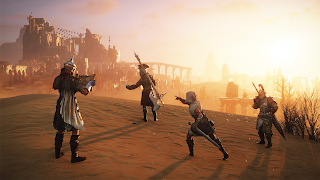Diablo 4 has captured the attention of gamers worldwide with its dark, immersive universe and Diablo IV gold challenging endgame content. Yet one aspect of the game continues to spark heated debate among its dedicated community: the absence of a loot filter. In numerous endgame battles and epic boss encounters, players are inundated with a barrage of dropped items, making inventory management an often overwhelming task. Since the game’s launch, fans have repeatedly called for a loot filter to help sort through this abundance of loot, and a recent comment from a Diablo 4 developer has once again brought the topic into the spotlight.
The Growing Call for a Loot Filter
The issue is simple: in the heat of battle, when massive amounts of loot are dropped, players can struggle to quickly identify which items are worth keeping and which are not. For many, the idea of a loot filter — a tool that allows them to customize which items are highlighted or automatically sorted — is a welcome quality-of-life improvement. This feature would help players focus on high-quality gear without getting bogged down by less useful items, streamlining their gameplay experience and saving precious time during high-stakes events.
For dedicated endgame players, every moment counts. The inability to efficiently manage loot means that valuable time is lost, and potentially game-changing items can be overlooked in the chaos. The community’s demands for this feature are not just about convenience — they reflect a deep desire to enhance performance and maintain competitive edge in an environment where precision and speed are crucial.
Blizzard’s Evolving Relationship with Player Feedback
Blizzard has a well-established history of engaging with its player base, often making significant improvements to Diablo 4 through seasonal updates and quality-of-life tweaks. Each new season brings with it a host of balancing changes and feature enhancements, many of which were directly inspired by community feedback. Despite this ongoing dialogue, the persistent requests for a loot filter seem to have met with a cautious response from the developers.
This tension is a common theme across many popular titles, and how Blizzard navigates it could influence the approach of other developers facing similar challenges. The lessons learned from this debate may well inform future updates not only in Diablo 4 but also in other games with similarly intricate economies and progression systems.
Conclusion: The Future of Loot Management in Diablo 4
The conversation surrounding the potential addition of a loot filter in Diablo 4 is a testament to both the passion of its community and the complexity of modern game design. While players continue to call for a tool that would simplify inventory management and enhance endgame performance, Blizzard’s measured approach highlights the potential risks such a feature could pose to the in-game economy.
Blizzard’s ongoing dialogue with its community has resulted in numerous quality-of-life improvements over time, and it stands to reason that if the demand for a loot filter remains strong enough, innovative solutions may eventually be implemented. Whether through a fully realized loot filter or a customizable system that mitigates economic concerns, one thing is clear: the evolution of Diablo 4 will continue to be shaped by a careful balance between player needs and the core mechanics that make the game so engaging.
In the end, the future of loot management in Diablo 4 will depend on finding that perfect equilibrium — one where convenience does not come at the cost of complexity, and buy Diablo IV Items where every player can enjoy a streamlined experience without undermining the very systems that define the game. As the developers continue to listen and adapt, the hope is that Diablo 4 will remain a shining example of how thoughtful design and community collaboration can drive meaningful innovation in the gaming world.









